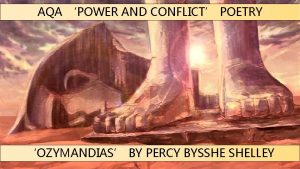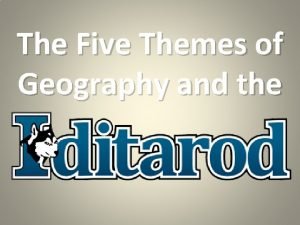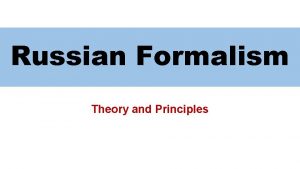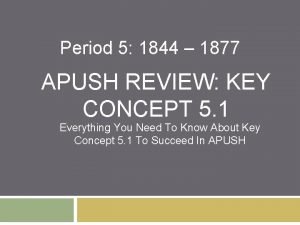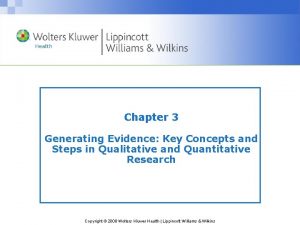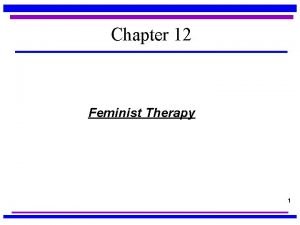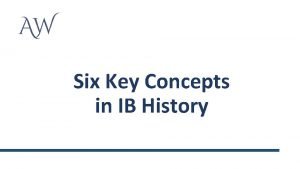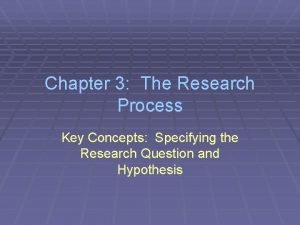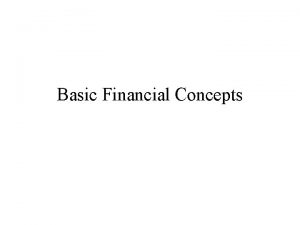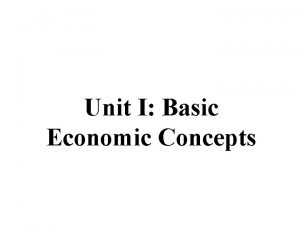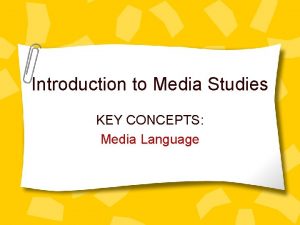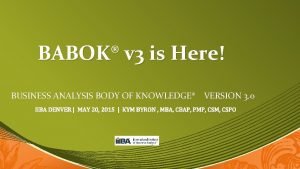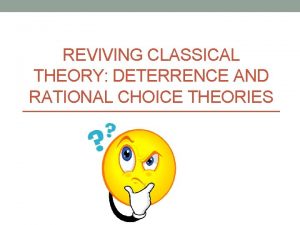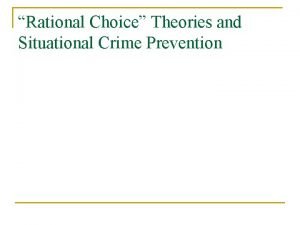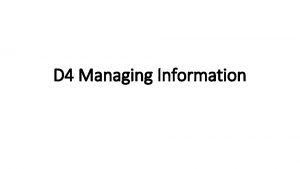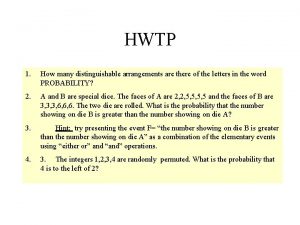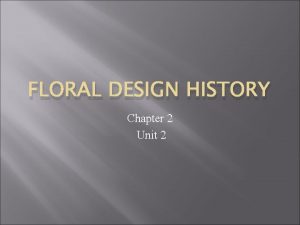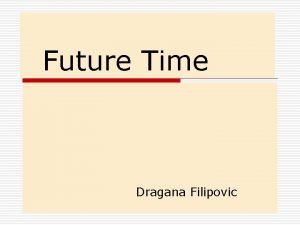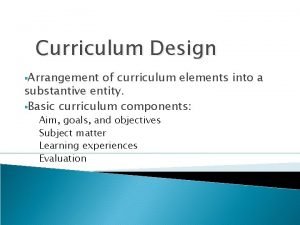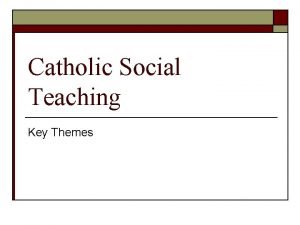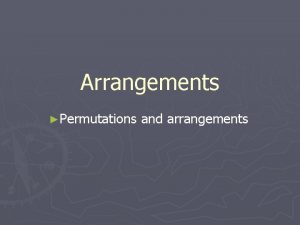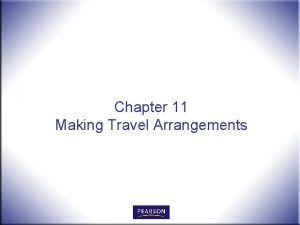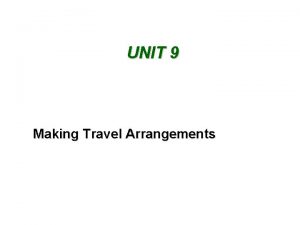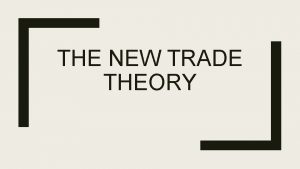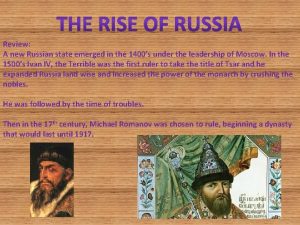Key Themes and Concepts New power arrangements emerged

















































































- Slides: 81

Key Themes and Concepts: New power arrangements emerged across Eurasia. Political states and empires employed a variety of techniques for expanding and maintaining control. Periods of relative stability allowed for significant cultural, technological, and scientific innovations. Unit Compelling Questions: 1. What became of Rome after it “fell? ” 2. What impact does the structure of a government have on the people it rules? 3. How do political states consolidate and maintain power? 4. How does cultural diffusion lead to advancements in political states?


A SERIES OF RULERS FROM THE SAME FAMILY

The rise, decline, and fall of a dynasty

1368 – Ming Dynasty MONGOLS INVADE!!!! 960— Song Dynasty 616 – T’Ang Dynasty 220 –Han Dynasty Ends govt d o t e r e d d r n O a Silk Road Exp e Chines Fair taxes Papermakingmpire e Roads & ! ! n o Iron i t Educa idges r B technology rvice e S l i v i C TRADE!!! ! Trade!! Zheng He’s Conquests Expansion After the rule of the Ming Dynasty, the Chinese felt they had everything they needed… they stopped exploring. They would still trade within their own cities- but go no further. This put China behind the modern world.

The Tang Dynasty From 618 to 907 C. E. , the T’ang dynasty ruled China. T’ang China was a golden age. T’ang rulers brought peace and prosperity to China. T’ang rulers even expanded into Korea, Manchuria, and parts of Central Asia. During the T’ang dynasty, China became the richest and most powerful country in the world. In addition, the examination system was reestablished and Confucianism provided the empire with a guiding philosophy. Once again, civil servants took difficult tests in order to work in government. Of course, any Chinese man could take the test but those who passed the examination always had a good education which most poor men could not afford. Eventually, China had a ruling class of scholars. There were great advances in architecture, sculpture, painting, and porcelain. The Chinese developed a unique method of gardening designed for peaceful contemplation – making use of streams, rocks, and trees. Around 1040 C. E. , the Chinese invented printing. A craftsman or artisan carved Chinese characters on a block of wood. Then a printer covered the wooden surface with ink and pressed sheets of paper against it. The Chinese developed printing nearly 400 years before Europeans. Copies of Confucian texts could be printed.

Tang Dynasty

The Tang Dynasty From 618 to 907 C. E. , the T’ang dynasty ruled China. T’ang China was a golden age. T’ang rulers brought peace and prosperity to China. T’ang rulers even expanded into Korea, Manchuria, and parts of Central Asia. During the T’ang dynasty, China became the richest and most powerful country in the world. In addition, the examination system was reestablished and Confucianism provided the empire with a guiding philosophy. Once again, civil servants took difficult tests in order to work in government. Of course, any Chinese man could take the test but those who passed the examination always had a good education which most poor men could not afford. Eventually, China had a ruling class of scholars. There were great advances in architecture, sculpture, painting, and porcelain. The Chinese developed a unique method of gardening designed for peaceful contemplation – making use of streams, rocks, and trees. Around 1040 C. E. , the Chinese invented printing. A craftsman or artisan carved Chinese characters on a block of wood. Then a printer covered the wooden surface with ink and pressed sheets of paper against it. The Chinese developed printing nearly 400 years before Europeans. Copies of Confucian texts could be printed.

The Song Dynasty The T’ang dynasty fell in 907 C. E. The Song dynasty arose soon afterwards to take its place. It lasted from 960 to 1279 C. E. Song China was the most advanced civilization of its time. Its capital city, Hangzhou, was one of the most modern cities of the world. The city had wide streets with streetlights. People cleaned these streets every day. It even had a fire department. There were many inventions during the T’ang and Song dynasties. Gunpowder was invented but it was mostly used for fireworks. An Arab trader learned how to make gunpowder and introduced it to the Europeans. Since Song rulers were not interested in expanding their borders, they made little use of gunpowder. Of course, the Europeans used gunpowder when they developed guns and cannons. The compass was invented in Song China. The compass allowed Chinese ships to travel far away. Finally, artists of Song China painted pictures that are considered masterpieces today. Song paintings seem nearly perfect and were painted on paper or silk scrolls. These paintings show people as small and unimportant. Nature – trees, mountains, and water – are most important. In addition, artisans of Song China made beautiful porcelain. This hard, shiny pottery was made from white clay that a potter bakes. Song artisans made thin porcelain bowls and vases. Eventually, the word china was used to describe this beautiful porcelain.

The Song Dynasty

The Song Dynasty The T’ang dynasty fell in 907 C. E. The Song dynasty arose soon afterwards to take its place. It lasted from 960 to 1279 C. E. Song China was the most advanced civilization of its time. Its capital city, Hangzhou, was one of the most modern cities of the world. The city had wide streets with streetlights. People cleaned these streets every day. It even had a fire department. There were many inventions during the T’ang and Song dynasties. Gunpowder was invented but it was mostly used for fireworks. An Arab trader learned how to make gunpowder and introduced it to the Europeans. Since Song rulers were not interested in expanding their borders, they made little use of gunpowder. Of course, the Europeans used gunpowder when they developed guns and cannons. The compass was invented in Song China. The compass allowed Chinese ships to travel far away. Finally, artists of Song China painted pictures that are considered masterpieces today. Song paintings seem nearly perfect and were painted on paper or silk scrolls. These paintings show people as small and unimportant. Nature – trees, mountains, and water – are most important. In addition, artisans of Song China made beautiful porcelain. This hard, shiny pottery was made from white clay that a potter bakes. Song artisans made thin porcelain bowls and vases. Eventually, the word china was used to describe this beautiful porcelain.


Essential question 1/8 � Why were the Tang and Song dynasties examples of Golden Ages?


1. How did the political structure of the Tang & Song Dynasties impact the people it ruled? 2. How did the Tang & Song dynasties consolidate, and maintain power in their empires? ? 3. How did cultural diffusion lead to advancements in the Dynasties?

THE MONGOLS The steppes are dry and mostly treeless grasslands that stretch across Eurasia. Nomads typically lived in the steppes. The unique environment of the steppes allowed nomadic peoples to excel at horsemanship and develop fierce fighting skills. Throughout much of history, various nomadic ethnic groups have pushed out of the steppes to conquer their neighbors, sometimes with devastating effects. For example, the Huns, repelled by the Chinese emperors, invaded Europe in the 4 th century and contributed to the collapse of the Roman Empire. Later, the Turks and the Mongols also came out of Central Asia. Questions: • What are the steppes? • Why do you think the steppes were ideally suited for horseback riding? • What ethnic groups moved out of the steppes to conquer neighboring lands? Like other nomadic peoples, the Mongols were divided into several tribes. A Mongol leader named Genghis Khan (1162 -1227) united the Mongol tribes and began attacking neighboring peoples beyond Mongolia, including northern China. Genghis Khan ran his army by imposing strict discipline and demanding complete loyalty. Skilled horsemen, his soldiers could travel for days on little more than a handful of grain and a cup of milk. In 1219, Genghis Khan turned westward and captured the Muslim states of Central Asia. Under his successors, Mongol rule eventually extended over Persia, Russia, Iraq, and all of China. At their height, the Mongols held sway over one of the largest empires the world has ever seen – reaching from the Black Sea to the Pacific Ocean. The Mongol empire was so vast that it was divided into four separate khanates of kingdoms. The steppes were too dry for farming without irrigation. Without farming, the Mongols had to rely heavily on the animals they kept: they rode horses, used oxen and camels to transport things, drank milk and ate meat and dairy products, and covered their homes with felt that they made from their sheep's wool. Their herds lived on native grasses, and since these nomads moved their homes from place to place, their animals did not overgraze any area of land. Questions: Describe how Genghis Khan trained his soldiers. What lands did the Mongols conquer? How did the Mongols survive in the dry steppes?


Questions: � Who was Kublai Khan and what did he do? � What was the Pax Mongolia? Why did trade increase during the Mongol rule of China? � What did the Europeans receive from the Chinese? What did the Chinese receive from the Europeans? � Why do you think Mongol rulers did not allow the Chinese to become high government officials? � Why do you think Chinese officials began to write plays and operas? � Sometimes a person’s travels can alter the course of history. How did the travels of Marco Polo influence world history?

Essential question 1/9 � What was the Pax Mongolia?




Key Leaders Genghis Khan Grandson, Kublai Khan

Characteristics • Fierce Warriors • Tolerant Rulers • Respect for Education and Art.

Pax Mongolia • Translated: Mongol Peace • Stability & Prosperity • Ideas & technology spread • Great Cities • Marco Polo • Ibn Battuta ****** SILK ROAD!!!

The Empire • Russia • Eastern Europe • S. W. Asia • China (Yuan Dynasty)



Essential question 1/10 � How were the Mongols able to unite?

Essential question 1/9 � How did cultural diffusion lead to advancements in the Dynasties

Islamic Golden Age Review: Can you list the Five Pillars of Islam? Can you define the following key terms? • Koran: • Monotheism: • Mosque:




Islamic and Mongol Empires

• • Strong Empire Allowed non-Muslims to practice religions if they pay a tax and to hold gov positions • Move capitals… Kublai moves to Beijing and the Abbasids move to Baghdad • Trade increases • Muslim leaders preserved and expanded knowledge from Greece and Rome • Golden Age Empires • Non-Mongols not allowed to hold gov. jobs • Defeat the Abbasid caliph • Tolerated other religions as long as they did not rebel

Comparing the Islamic Caliphates to the Mongol Empire � 1. Which empire held power for the longest amount of time, the Mongols or Islamic caliphates? � 2. Which empire had the most power and land? � 3. Which rulers do you think were more effective at gaining power, the Mongols or the Islamic caliphs? � 4. Which rulers do you think were more effective at consolidating and maintaining power, the Mongols or the Islamic caliphs?

Essential question 1/13 � How were the Islamic Caliphates and the Mongols able to unite their people?

661 -750 750 -1258


The Middle Ages

Big idea: Following the fall of the Roman Empire, divergent societies emerged in Europe.

What became of Rome after it “fell? ” � The eastern half became known as the Byzantine Empire! It went through a golden age. � The western half collapsed and went through what is known as the Medieval Period. This is also called the Middle Ages.

The Middle Ages, or Medieval period, lasted from about 500 to the middle of the 1400 s. The collapse of the Roman empire had left Western Europe with no unifying government. In response, political and social systems emerged, such as Feudalism and Manorialism, that were based on powerful local lords and their lands. A strict social hierarchy existed during the Middle Ages. The Christian Church emerged as a unifying force in Western Europe and had great influence over economic and social as well as religious life.

BIG Ideas!!!! • There was disorder for a time after the collapse of the Roman Empire. • Wealthy landowners dominated society and provided people with PROTECTION. • People relied on the Christian Church for spiritual and political guidance. • Achievements in art and architecture centered around Christianity. Chaos/Disorder (No central govt) Feudalism!!!!!!


The Germanic people who overran the Roman empire were warriors, farmers, and herders. Their culture differed greatly from that of the Romans they had conquered. Germanic tribes were governed by unwritten laws and customs and ruled by elected kings.

The Rise of the Franks • From about 400 to 700 warrior tribes divided Europe and fought for control of various territories • Franks were the most powerful & successful of the tribes Charlemagne – Frankish King in Gaul (France) • Built an empire that stretched along France, Germany & part of Italy • Charlemagne helped out the Pope against rebels. In return he was made king. H. R. Emperor • Attempted to create a united Europe, spreading Christianity to the far ends of his empire.

Essential question 1/17 � How did Charlemagne create a unified Europe ?

Government: • Nobles ruled local areas; they were given land in return to help defend the empire Learning: • Schools were set up to ensure the education of government officials. • Established libraries End of Charlemagne’s Reign When he died his empire was divided into 3 separate kingdoms, one for each grandson

Long Term Effects • Strong government was a model for future medieval leaders • Helped spread Christianity Europe to N.

THE FALL OF ROME When the Western Roman Empire fell in 476 CE, kings and emperors were too weak to maintain order. There was a power vacuum. A power vacuum is a condition that exists when someone has lost control and no one has replaced them. With the power vacuum in the Western Roman Empire, European tribes began fighting for domination. In addition to the fighting between European tribes, there were constant invasions by the Vikings, Muslims, and other groups. This was a time period of danger, violence, and instability.

What is located at the center of the Manor? How do the Serfs’ houses compare with the house of the Lord? Notice the church located towards the center of the manor. What does this say about society during the Middle Ages?

FEUDALISM BRINGS PROTECTION To create a safer environment, a system of feudalism developed. Feudalism was a decentralized or loosely organized system of rule based on land ownership. In Feudalism, kings divided up their land into fiefs and gave them to lords. Fiefs could range from a few acres to a hundred square miles. These lords gave fiefs to vassals. In exchange for the fief, the vassals pledged allegiance to their lord. This allegiance meant that they would raise armies to protect their own lands and fight for their lords. This exchange of pledges is called a feudal contract. This was an interdependent relationship with mutual feudal obligations.

Feudalism Brings Protection Land/fiefs protection Feudal Contract protection Labor and farmed the land Manorialism

FEUDALISM BRINGS STABILITY Feudalism created stability through the manor system which established a clear social and economic structure called manorialism. Manorialism was an economic system structured around the feudal manor, or the lord’s estate. This estate included the lord’s landholding, farming lands, and peasant villages. Most peasants were serfs, or people bound to the land. Serfs were not allowed to leave the manor without permission. Serfs made repairs and farmed the land. In exchange for farming and repairs, serfs were protected by their lord in the event of a war or raid. The manor was self-sufficient which meant that the peasants produced most of everything they needed including food, clothing, tools and furniture. They did not need to trade with others for their basic needs. MC review

The Social Structure of Feudal Society Roman Catholic Church/ Pope Kings (Monarchs) Nobility (Lords) Knights & Vassals Serfs & Peasants

The Structure of Feudal Society Land King CATHOLIC CHURCH!!! Loyalty to the King Lords (Nobles) Land Vassals (lesser lords) Knights Protection & Land Peasants Serfs Military Service Labor & Military Service

1. How did the structure of the Feudal system impact the people it ruled? 2. How was political power consolidated and maintained under Feudalism?

Mutual Responsibilities or Obligations!!!! Serfs helped the Nobles by: • Farming the lord’s land sharing the crops • Other jobs (fixing & making things) • Serve in the lord’s army in times of war The Nobles helped the Serfs by: • Allowing the use of the lord’s land & sharing the crops • Offered protection LAND & PROTECTION FOR LOYALTY!!!!!!

The Byzantine Empire

In 284 C. E. , the Roman Emperor Diocletian divided the Roman Empire into two parts. Diocletian divided the empire in an attempt to make governing the empire more manageable. Ultimately, the Western Roman Empire fell in 476 C. E. It fell due to barbarian invasions, high taxes, and corrupt rulers. However, the Eastern Roman Empire did not fall. It survived and became known as the Byzantine Empire. Therefore, the Byzantine Empire was formerly the Eastern Roman Empire. It lasted for a thousand years beyond the fall of Rome. The Byzantine Empire was a natural center for trade. It was located at the crossroads of Europe and Asia. Silk and spices from the east, furs from Russia, grains, olives, and wines from the empire itself brought great wealth. Its capital, Constantinople, was a natural center for trade. The emperor held absolute power. The greatest Byzantine emperor was a man named Justinian. He became emperor in 527 C. E. He is remembered for three reasons. First, he tried to win back the Roman lands in the West. In fact, he conquered a great deal of land. Second, he made Constantinople, the capital of the Byzantine Empire, more beautiful. He ordered the construction of one of the world’s most beautiful churches – the Hagia Sophia. Its ceiling rises 180 feet from the floor. Finally, Justinian is remembered for a code of laws. He asked a group of Greek and Latin scholars to collect and organize the laws of his empire. They published their code of laws in C. E. . 533. Known as the Code of Justinian, it was a complete record of Roman law. The main ideas of this code later shaped the legal systems of Europe and the United States. The fall of Constantinople was a turning point in global history. It marked change in power in the region from the Christian Byzantine Empire to the great Muslim trading empire of the Ottomans.

The Byzantine Empire 1. Emperor Diocletian divided the Roman Empire into two parts to make governing more manageable. � The Western Empire fell due to barbarian invasions, high taxes, and corrupt rulers. 2. The Eastern Roman Empire did not fall and therefore survived and turned into the Byzantine Empire.

Constantinople � 3. The Capital of the Byzantine Empire was a natural center for trade.

4. The Byzantine Empire became wealthy from trading furs, grains, olives, and wines.

The Byzantine Empire

5. The Hagia Sophia was a Byzantine Church and an architectural marvel.

Hagia Sophia

Justinian � � � Byzantine Emperors held absolute power. 6. The Byzantine Emperor, Justinian, collected all Roman written laws. 7. The Code of Justinian is a collection of Roman written law.

Essential question 1/20 � Why was Justinian’s code written?

Achievements of the Byzantine Empire Orthodox Christian Church Art “Schism” or split between Roman Catholic & Eastern Orthodox Church Icons—holy images Mosaics Preserved Grecco. Roman Culture!!!!! ! Code of Laws JUSTINIAN CODE – Basis of laws today! Engineering & Architecture Constantinople- dazzling city Church: Hagia Sophia Arching Dome

Hagia Sophia


Byzantine Artwork

Decline & Fall of the Byzantine Empire: The fall of Constantinople was a turning point in global history. It marked change in power in the region from the Christian Byzantine Empire to the great Muslim trading empire of the Ottomans. What led to the decline of the Byzantine Empire? Empire lost much land to invading armies; internal court struggles & constant warfare

Why did the Byzantine Empire eventually decline?


The Voyages of Zheng He… China became the dominant power in Asia under the Ming Dynasty (1368— 1644). Many vassal states from Korea and Southeast Asia paid tribute ($$$) to the Ming to show submission. One of the leaders of the Ming Dynasty, Yonglo, had much curiosity about the outside world. In 1405, before Europeans began to sail beyond their borders, he launched the first of seven voyages of exploration. A Chinese Muslim admiral named Zheng He led all of the seven voyages. His expeditions were remarkable for their size. Everything about them was large – distances traveled, fleet size, and ship measurements. Among his fleet were fighting ships, storages vessels, and huge “treasure” ships measuring more than 400 feet long. The crews numbered over 27, 000 on some voyages. They included sailors, soldiers, carpenters, interpreters, accountants, doctors, and religious leaders. Zheng He’s treasure ship compared with Christopher Columbus’s Santa Maria

Everywhere Zheng He went, he distributed gifts including silver and silk to show Chinese superiority. As a result, more than 16 countries sent tribute ($$$) to the Ming court. Even so, Chinese officials complained that the voyages wasted valuable resources, and after the seventh voyage, in 1433, China withdrew into isolation.

Comprehension Questions 1. What years did Zheng He explore? 2. Name 3 places he traveled. 3. How does Zheng He’s ship compare to Columbus’s? 4. What does this say about Chinese society at this time? Why were Zheng He’s explorations so important to world history?

Why did the Byzantine Empire eventually decline?
 What is urdu hindi controversy
What is urdu hindi controversy Democratic developments in england
Democratic developments in england Who emerged as patrons in the baroque period?
Who emerged as patrons in the baroque period? Power trianlge
Power trianlge Stability skills
Stability skills Key partners canvas
Key partners canvas Business model canvas tripadvisor
Business model canvas tripadvisor Langue and parole in linguistics
Langue and parole in linguistics Chapter 17 promotional concepts and strategies answer key
Chapter 17 promotional concepts and strategies answer key Section 4 flatworms mollusks and annelids
Section 4 flatworms mollusks and annelids![] ]](data:image/svg+xml,%3Csvg%20xmlns=%22http://www.w3.org/2000/svg%22%20viewBox=%220%200%20200%20200%22%3E%3C/svg%3E) ]
] Power and conflict table of themes
Power and conflict table of themes Time markes
Time markes Arrangements and permutations
Arrangements and permutations Circular arrangement questions
Circular arrangement questions Assessment and reporting arrangements 2017
Assessment and reporting arrangements 2017 Superman and paula brown's new snowsuit themes
Superman and paula brown's new snowsuit themes Sled dog racing and the 5 themes of geography
Sled dog racing and the 5 themes of geography How to quote romeo and juliet
How to quote romeo and juliet Key concepts of russian formalism
Key concepts of russian formalism Key concepts examples
Key concepts examples Apush period 6
Apush period 6 Apush period 5 key concepts
Apush period 5 key concepts Period 3 key concepts apush
Period 3 key concepts apush Apush key concepts period 2
Apush key concepts period 2 Key concepts in qualitative research
Key concepts in qualitative research Key concepts of feminist therapy
Key concepts of feminist therapy Reviewing key concepts reproductive barriers
Reviewing key concepts reproductive barriers Apush unit 2
Apush unit 2 Apush college board key concepts
Apush college board key concepts History key concepts ib
History key concepts ib Apush key concepts period 2
Apush key concepts period 2 Apush key concepts period 1
Apush key concepts period 1 Key concepts in research
Key concepts in research Basic concepts of financial management
Basic concepts of financial management Detente apush
Detente apush Unit 1: basic economic concepts answer key
Unit 1: basic economic concepts answer key Denotes vs connotes
Denotes vs connotes Enterprise architecture key concepts
Enterprise architecture key concepts Spitting in clients soup
Spitting in clients soup Business analysis key concepts
Business analysis key concepts Deterrence and rational choice theory
Deterrence and rational choice theory Rational choice theory key concepts
Rational choice theory key concepts Key concepts in cultural studies
Key concepts in cultural studies Operations management course outline
Operations management course outline Key concepts of diversity
Key concepts of diversity What is spot stocking
What is spot stocking Floral design renaissance period
Floral design renaissance period Access arrangements training
Access arrangements training Middle ages floral design
Middle ages floral design Arrangement of story is called
Arrangement of story is called Managing information between professionals
Managing information between professionals Class arrangement styles
Class arrangement styles Switching replications design
Switching replications design Distinguishable arrangements
Distinguishable arrangements Which era is known for symmetrical tree like designs?
Which era is known for symmetrical tree like designs? Con 100 shaping smart business arrangements
Con 100 shaping smart business arrangements Early american period floral design
Early american period floral design Types of collaborative arrangements
Types of collaborative arrangements Present progressive of plan
Present progressive of plan Definite arrangement
Definite arrangement Shannon is making identical balloon arrangements
Shannon is making identical balloon arrangements Element of curriculum
Element of curriculum Assessment arrangements
Assessment arrangements Flagellar arrangements
Flagellar arrangements Line arrangements
Line arrangements Lotus flower vase egypt
Lotus flower vase egypt Starting a busness
Starting a busness New tribe summary
New tribe summary Solar power satellites and microwave power transmission
Solar power satellites and microwave power transmission Actual power and potential power
Actual power and potential power Dispersive power of a grating
Dispersive power of a grating New york pennsylvania new jersey delaware
New york pennsylvania new jersey delaware Fresh oil, new wine scripture
Fresh oil, new wine scripture Strengths and weaknesses of the articles of confederation
Strengths and weaknesses of the articles of confederation Marketing kotler keller
Marketing kotler keller New classical and new keynesian macroeconomics
New classical and new keynesian macroeconomics Chapter 16 toward a new heaven and a new earth
Chapter 16 toward a new heaven and a new earth Neil thisse is a loyalist answers
Neil thisse is a loyalist answers New classical and new keynesian macroeconomics
New classical and new keynesian macroeconomics Emigree poem annotated
Emigree poem annotated Lord of the flies summary chapter 8
Lord of the flies summary chapter 8
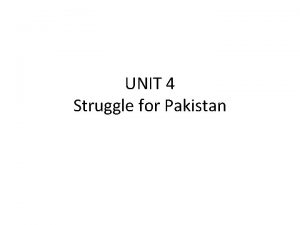
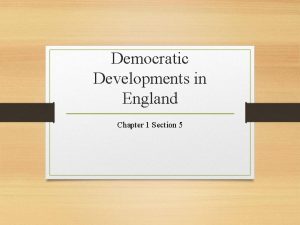
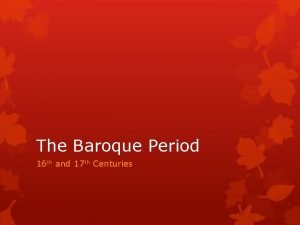

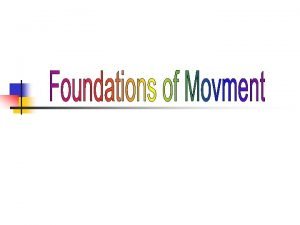


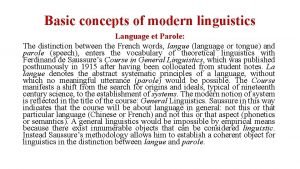


![] ]](https://slidetodoc.com/wp-content/uploads/2020/11/2404819_9eb8166b01395994bc3f851e1b2a9913-300x225.jpg)
